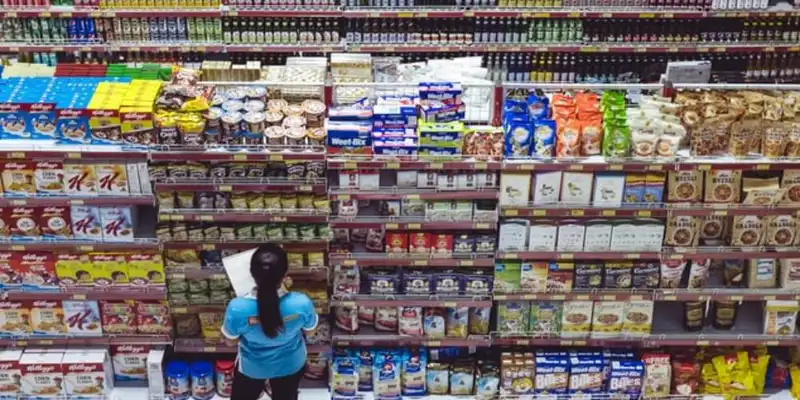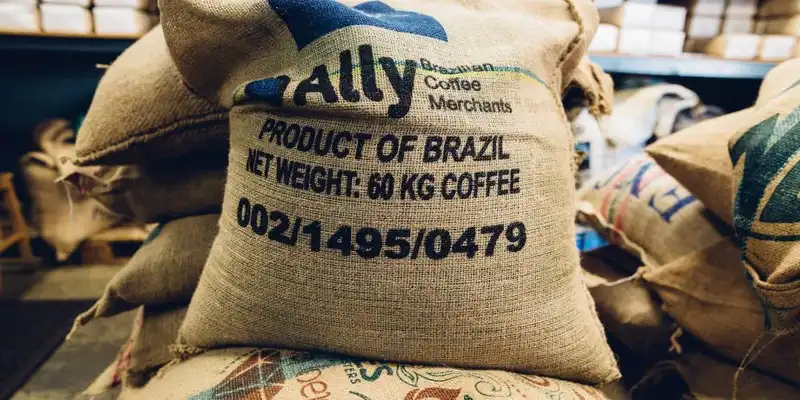Effectively Managing Order Processing in The Food Service Industry
Competing in the Restaurant Industry
Owning and managing a restaurant can be extremely challenging; there is the menu to consider, labor to manage, storage and inventory to optimize, and the list goes on and on. In such a highly competitive environment with already slim profit margins, the key to success is controlling your costs.
As the food is your largest expense, it is crucial to have an inventory management system in place that allows you to adequately handle your stock and keep a perfect balance between demand and supply.
Remember, too little can lead to dissatisfied customers, while too much may lead up to unnecessary wastage and additional costs. In fact, for every $1 that restaurants invest in reducing waste, they can save $7.
The ideal process to take your inventory includes considering your order history, trends in customer behavior and extra stock to help during uncertainties. Once an ideal inventory level has been discovered, restaurants need to pinpoint the proper distribution channels to source the materials while focusing on cost, quality, credit period, etc.
To record these transactions, many businesses rely on conventional methods such as paper and excel spreadsheets and this is where the problem starts.
Consider this, around 90% of spreadsheets have errors that lead to misleading numbers and irregular inventory orders.
The good news is that technological progress has paved the way for seamlessly managing and handling inventory through dedicated order management software. This serves to ensure that you are always stocked up as per the required limit and wastage of food is substantially reduced.
Let's dive in and explore how you can manage costs and survive in this dynamic restaurant industry with the help of a software.
Planning for the Ideal Inventory

Efficiently handling of the inventory is considered as a core competency for restaurants. It allows you to
- Check your restaurant's financial condition by calculating the cost of goods sold
- Know the amount of inventory required to meet the demand
- Stop employees from stealing your stock
- Avoid over-ordering and wastage
As per a study, 10% of food is wasted before being served, which in turn means that you lose a certain percentage of your profits.
But by adopting the following best practices, you can ensure that you are never overstocked nor under stocked.
Planning The Perfect Menu and Analyzing The Yield Of Each Stock Item
One problem that many restaurants face is a lack of consistency in the size of the served portions, taste and overall quality. This tends to happen when food is being prepared by different chefs as per their designated shifts.
The practical approach is to pick the variant that passes with flying colors and jot down precisely how it has been prepared by pinpointing the materials, the cooking time and the required temperature.
Once everything is noted down, you can calculate the average number of orders for that particular dish and multiply it with the ingredients per serving. Doing this for all the menu items will substantially reduce the chances of food going to waste.
Plus, a recipe will function as an instruction manual to maintain consistency.
Train Your Staff To Handle Inventory
Training your staff on how to keep inventory is very important; in other words, all workers should be proactive in recording any changes in the stored materials due to spillage, expiration, and other human-errors.
These reports can help ascertain if there is a need to order more inventory to meet the potential demand.

Just In Case Inventory
Restaurants, like any other business, come across many uncertainties as such, they should keep extra stock to account for an unforeseen rise in demand.
This helps in keeping customers satisfied as they are always severed with piping hot food. This makes it even more crucial to keep a check on the emergency stock and overall inventory.
Calculate the Variance
It is quite alarming to know that 75% of workers steal at least once from their workplace and internal employee theft is responsible for 75% of the inventory shortage and 4% of sales.
To discourage such behavior, you need to check the daily variance report, which is a comparison between the consumed stock as per sales and the predefined ideal stock consumption.
If the variance is low for instance, 6% then that may be due to wastage, but if it's beyond the benchmark then your staff has some explaining to do.
Order As Per Designated Shelf Life
Another factor for optimizing inventory is consuming the stock before it gets expired.
The best way to do this is by using the FIFO method, First In First Out, which means that all items should be consumed first within their shelf life before moving towards new inventory.
Establishing a Worthy Supply Chain

Costs can be significantly slashed by controlling how much is spent to acquire the required inventory. The easiest way to do this is to track your stock and consider how much to order, how much stock is left behind, your prior sales, potential sales, etc.
By doing this, you gain control over your current inventory and have a clear understanding of what needs to be ordered. Furthermore, the buying cycle includes factors such as lead times, quality of the items and the price.
Many small restaurant owners may purchase their supplies on their own accord, but this is not a feasible scenario going to the market for each ingredient is somewhat time-consuming and reduces efficiency.
For instance, a pizzeria runs out of yeast that is used to prepare the dough but they are jammed with orders and the owner is handling the cash register. They can send a staff member to buy yeast, but the wasted time in the process could have been saved if the pizzeria was adequately stocked up with supplies.
A Single Supplier
An exclusive supplier may agree to provide you items within a specific cost for a defined period. This means that even if there is a rise in the price of these items, you will continue to receive it at the same cost.
This comes in handy while planning a seasonal menu with costs decided for the entire time it is available.
Multiple Vendors
The option to use various suppliers gives you the power to bargain on your regular orders since there are many providers, it is easy to get competitive pricing.
Remember, suppliers try to gain your business by offering better pricing, quality, and value-added services.
Traditional Paper Invoices & Spreadsheets May Cause An Error

Once you have narrowed down to what is required and how to source it, you can start tracking your inventory.
Many small restaurants document all this manually on paper or by using spreadsheets on Microsoft Excel. Though this seems like a convenient and cost-effective method, it poses a considerable amount of challenges.
Human Errors
Spreadsheets are based on integrated cells, which means that even a small mistake can result in a ripple effect to you, the results may seem like a well-proportioned sheet with accurate data, but in reality, your next inventory order may not be what is required.
Handling and Maintaining Sheets Is Time Consuming
You need to put in a considerable amount of time in creating a spreadsheet to handle your inventory, and each time there is a new addition or removal, the spreadsheet needs to be updated.
But doing this manually can be quite time-consuming. Sure, you can delegate it to someone else, but it still does not limit the chance of a potential human error. In fact, this can open you up to additional problems like chances of theft.
They Can Be Wiped Out
Spreadsheets are mostly saved on one's hard disc; but what if that particular hard disc is infected with a virus and all your data gets corrupted?
Similarly, what if an employee by mistake deletes a spreadsheet how would the new entries be recovered?
Sure, you may have kept a backup but chances are that you will still lose the most recent entries.
Optimizing Inventory with an Automated Order Management System
Without a proper system in place, it becomes nearly impossible to handle inventory management, including sourcing, handling, controlling and reordering.
The best-case scenario is to opt for an automated order management system that can handle and manage all your suppliers and vendors.
Some of the benefits of such a system include
- Saving a considerable amount of money in the long run as you have a detailed outlook of your stock
- An automated order management system ensures that you never run out of stock. So, when a customer places an order for a dish, you would have all the ingredients in stock to prepare it
- Ability to upload all your inventory in bulk
- All orders appear in a centralized manner no need to view paper-based invoices, spreadsheets or multiple software to see your order history
- All returns and refunds are handled appropriately expired goods are discarded from the inventory and the supplier is notified
- Saves time in order processing no need to create and manage multiple spreadsheets
- Chances of errors are eliminated
- Real-time information can be viewed to fix issues as they appear
- Mobile apps allow you to easily view everything on the go with a tablet or phone
- Theft is significantly reduced, which is a growing concern as each year US businesses lose $40 - $400 billion due to employee theft
A Management Solution That Checks All the Boxes
One way of making sure that your inventory is managed and you have enough stock to sustain demand is by using the order processing software, ZipOrdering.
Here are some of its key features and benefits.
Reduced Errors In Order Placement
This software allows you to import the different products available with your suppliers with a detailed, up-to-date report of those you currently order.
Plus, you can create a single order guide that has all your suppliers where you can also easily place new orders.
Consolidated Product Orders
Pre-plan your orders by creating custom order lists to be sent to suppliers when the need arises. You have the option to automate the inventory list at periodic intervals or as and when required.
Never Run Out Of Supplies
The dedicated order processing system has you covered for all possible uncertainties. If a supplier is unable to provide you with the goods, you can use Zip Ordering's search functionality to find another local vendor who is able to supply the required item.
Detailed Analytics
The centralized system relays your order history along with search and filter options. Plus, the reports page gives an in-depth product-by-product analysis as well as a complete picture of all the costs incurred.
With information being updated in real-time, you can ensure that you never over more or less than is required.
Push Notifications
When an order is placed, the supplier is sent an order form and you receive a confirmation letter that the order has been placed and seen. With Zip Ordering, there is no need to follow-up via call, email or messages.
A Responsive Interface
Zip Ordering works in the cloud, which allows it to be accessible from anywhere and at any time. Simply download the free application for Android or iOS so you can maintain, manage and place orders right from your phone.
Zip Ordering provides you a centralized platform for efficiently handling your entire inventory and suppliers. This eliminates the need to make and maintain documents, invoices, and receipts saving you considerable time and money.










